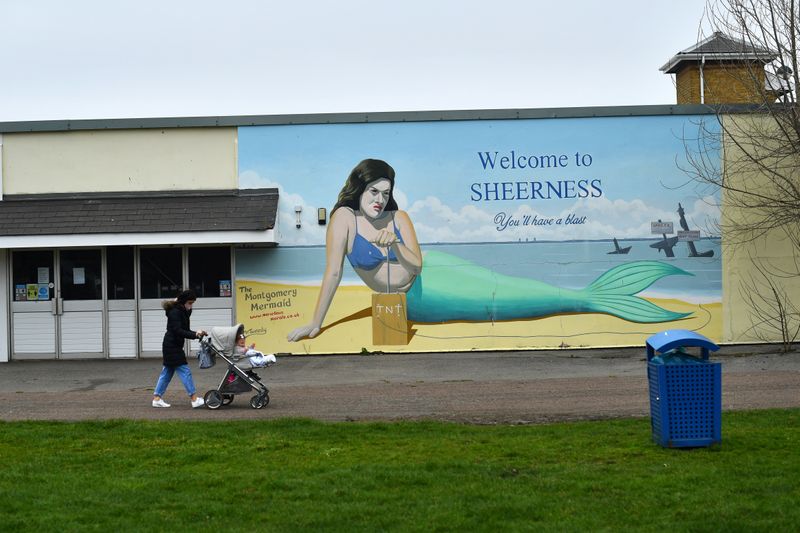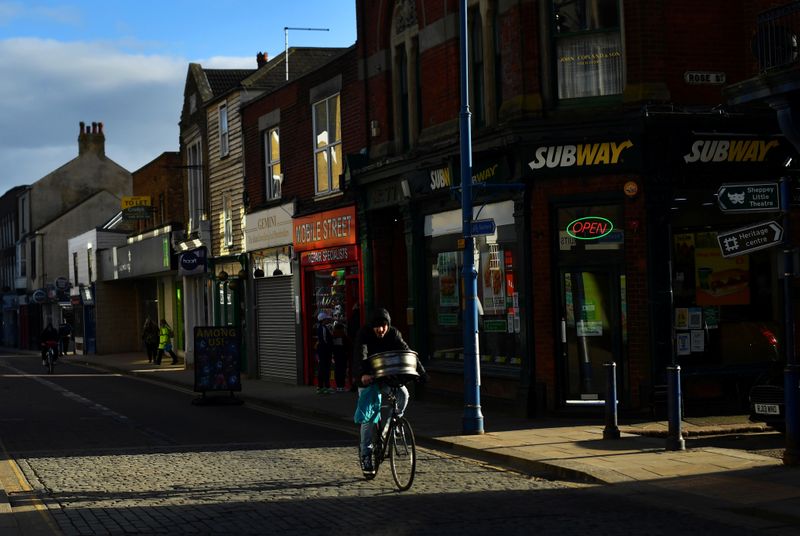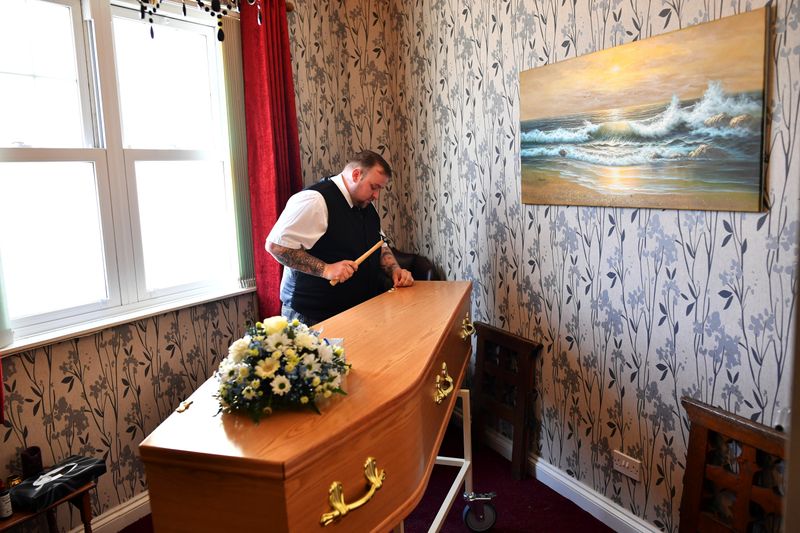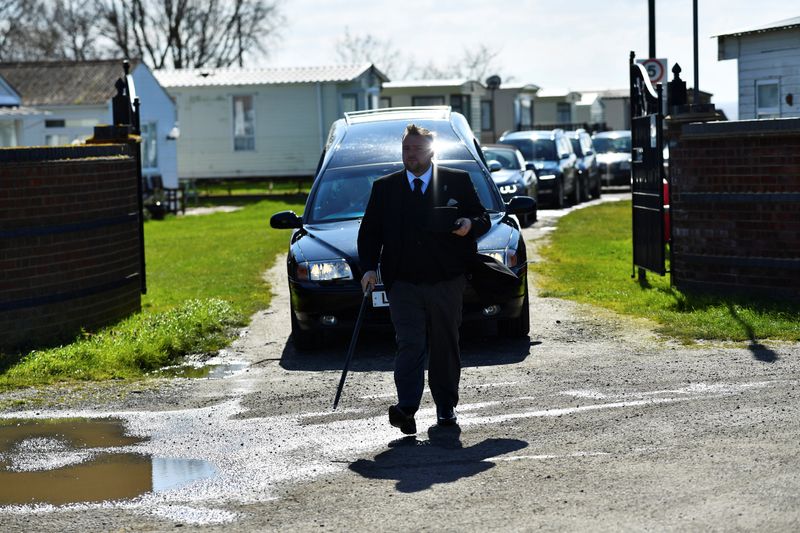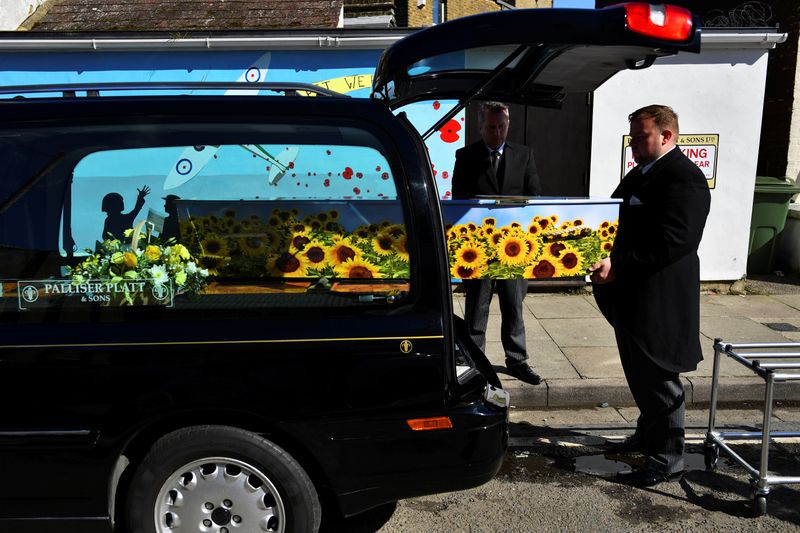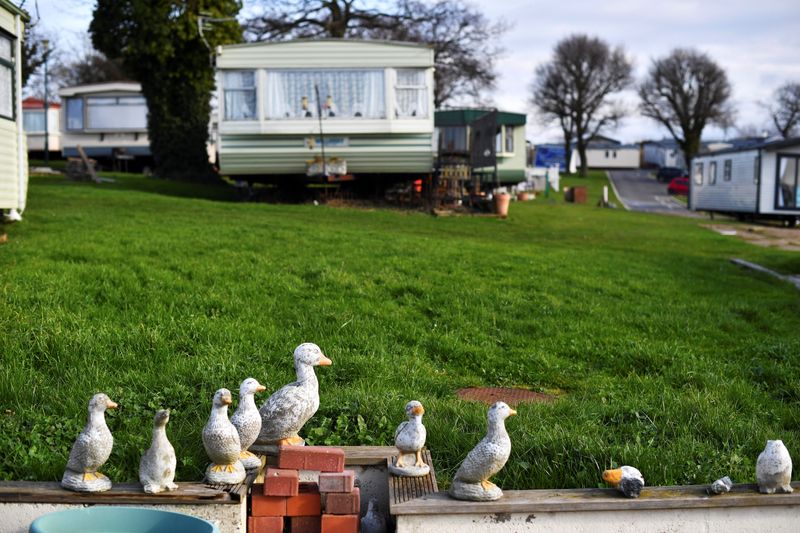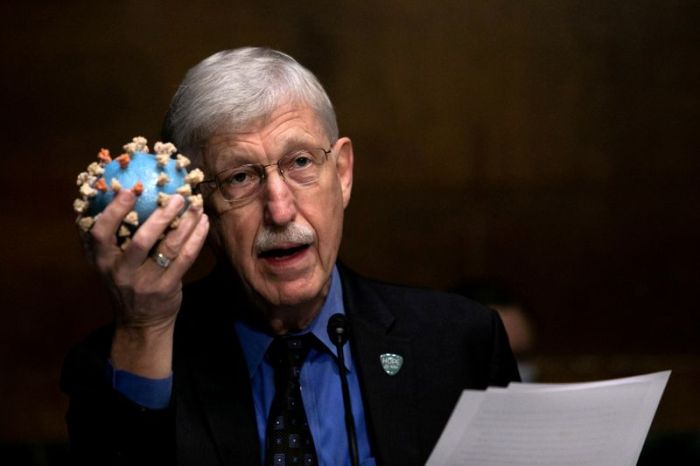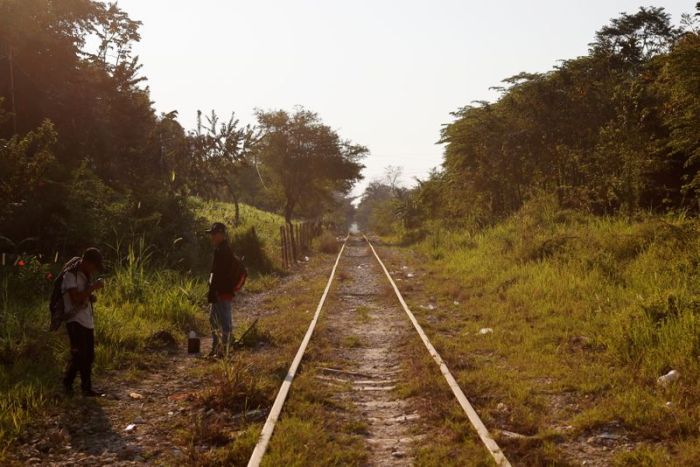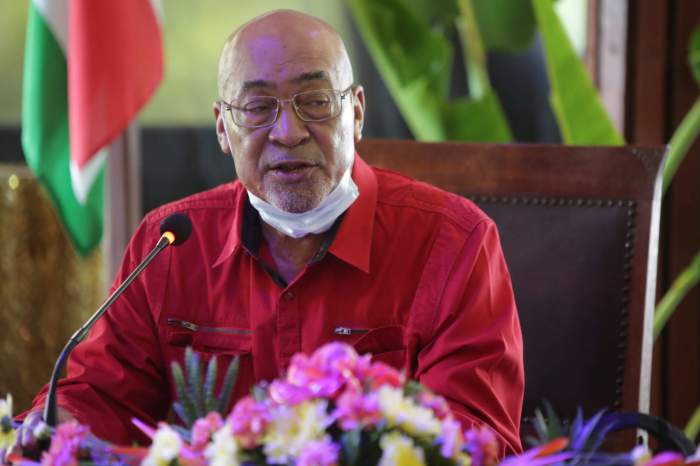ISLE OF SHEPPEY, England (Reuters) – Warm weather brings tourists to the Isle of Sheppey, a flat, marshy island near the mouth of the River Thames. Each summer, they fill Sheppey’s many caravan parks or flock to villages with seaside attractions geared toward old-school British tourists: pubs and penny arcades, mini-golf and fish and chips.
Another kind of visitor stays all year round. Clustered in fields and marshes in eastern Sheppey are three prisons holding about 2,500 men. Giant wind turbines stand like sentries outside the lichen-clad walls of HMP Elmley, the largest of the three, where a 52-year-old prison officer named Paul Tottman worked.
On Oct. 28, a Wednesday, he returned home “very angry,” said his wife, Laura. Covid-19 infections among HMP Elmley’s staff and prisoners were rising, and Tottman, who was asthmatic, felt vulnerable. On Thursday, she said, the prison called to tell Tottman that he had been in contact with a Covid-positive person and should self-isolate. Soon, Tottman also tested positive, and was feverish and fighting for breath.
Sheppey had barely been touched by the pandemic’s first wave last spring. This time, the disease tore through the prison and across the island. It hit the Tottman family hard. Laura and their daughter Hattie fell ill, and within a week of his test, Paul was taken to hospital. “Then it started to go downhill,” Laura said.
Sheppey has been prone to invasion ever since Ivar the Boneless and his Viking hordes conquered it in the ninth century. The arrival of a deadlier and more transmissible variant of coronavirus – the B.1.1.7 “variant of concern” – was also swift and destructive. Although scientists say the first known case was later traced elsewhere in the county of Kent, it was Sheppey and its borough of Swale where the variant first took hold.
The new variant quickly spread from Kent across London and southern England, going from an estimated 3% of cases in England at the end of October to 96% at the start of February. The surge pushed Britain’s Covid death toll into six figures; it now stands at 126,000. Two-thirds of those deaths have occurred since Sept. 20, when the variant was first detected.
The so-called Kent or UK variant has now been reported in more than 100 countries. Recent research has shown that it is not only more contagious but also more deadly, although existing vaccines still work against it. The variant’s arrival has fuelled a rise in infections elsewhere in Europe that threatens to outpace sluggish vaccination programs. The U.S. Centers for Disease Control and Prevention predicts it will be America’s dominant variant by the end of this month; experts warn that the country should be bracing for impact and not – as many states are – loosening restrictions.
The Kent variant was identified by the COVID-19 Genomics UK Consortium, or COG-UK, a unique scientific endeavour set up last March to explore how genomic research might help tackle the pandemic. Since it emerged in 2019, the coronavirus has mutated thousands of times. These mutations can be tracked by sequencing, or “reading,” their complete set of genetic instructions, or genomes.
Solving the mystery of the Kent variant was a race against time by the COG-UK scientists, who have sequenced almost half of the world’s catalogue of Covid-19 genomes. The first case of B.1.1.7 was later traced back to September, but scientists didn’t fully connect it to the surge in cases until December, when they confirmed their fears: The variant was so transmissible, it was leap-frogging restrictions put in place to tackle the virus.
At the time, COG-UK was sequencing about 9,000 samples a week, using leftover swabs from the labs where most of Britain’s Covid-19 tests are processed. For most of last year, that process took about two weeks. But collecting and sequencing genomes is – relatively speaking – the easy part. Much harder is quickly establishing whether a variant is more contagious or deadly – or, in B.1.1.7’s case, both. A range of factors can explain a jump in infections, from a super-spreader event to a change in human behaviour as hot weather turns to cold.
Also, although two weeks between swabbing and sequencing is fast by the standards of genomic research, it wasn’t fast enough to keep up with a highly transmissible variant. While scientists puzzled from afar, funeral directors on Sheppey worked 18-hour days to cope with the dead, and Kent’s hospitals filled up with patients who were often too sick to save.
In the end, COG-UK’s scientists relied upon a timely tipoff from a distant colleague and a hack involving Covid tests to zero in on the Kent variant and more quickly confirm how dangerous it was. “There wasn’t some set method for detecting a variant like this,” said Erik Volz, a genetic epidemiologist at Imperial College London and member of COG-UK. “We had to do it on the fly and develop methods as we went.”
Although the scientists couldn’t stop the variant’s conquest of Britain, they had become a warning system for the world. And Sheppey had become an improbable breeding ground for a variant that spans the globe.
THE ISLAND AS A PLACE APART
Sheppey is no stranger to contagion. Off its western coast lies Deadman’s Island, a mudbank strewn with human bones thought to belong to men and boys who died of infectious diseases on prison ships moored nearby in centuries past. One such disease was “marsh fever,” later known as malaria, carried by Sheppey’s swamp-bred mosquitoes. Britain’s last major outbreak of malaria happened on the island, brought there by troops returning from World War One. (After an earlier conflict – the Battle of Trafalgar – Admiral Nelson’s body was brought ashore at Sheppey preserved in a barrel of booze.)
The tidal strait that separates Sheppey from the rest of Kent is narrow and spanned by two bridges, the larger opened only in 2006. Some locals still regard the island as a place apart. Angela Harrison, a local councillor responsible for health, was born on Sheppey and said she knew people who had never left it. Central London lies only 40 miles up the Thames, but Sheppey (population: 40,000) feels untouched by metropolitan wealth or values.
Harrison said it became clear in late October that a new wave of infections had hit the island particularly hard. “Everyone was asking the same question: Why – what have we done?” she said. Some islanders blamed outsiders for bringing in the virus, she said, or blamed each other for not wearing face masks. Sheppey was vulnerable because many people work in food distribution centres, care homes or the holiday parks – jobs they can’t do while sheltering at home.
Bill Tatton, a councillor who represents Sheppey East, lives in Warden, a village flanked by large caravan holiday parks. In hindsight, he said, the island ought to have shut the two bridges and implemented a “sensible lockdown – no one in, no one out, for two weeks.”
Tatton added: “There were people … who said, ‘Since they built that very high bridge across the Swale, we’ve had nothing but problems.'”
The bridge links Sheppey to the rest of Kent, known as the “Garden of England” for its past abundance of orchards and hops gardens, and for its beaches, castles and postcard-perfect English villages. But Kent is less idyllic than its image suggests. “There’s a big class divide, a big geographical divide,” said Jackie Cassell, a public health expert at Brighton and Sussex Medical School who grew up on Sheppey. “Most of the money is in the middle of the county and most of the poverty is at the edges.”
One of those edges is Sheppey’s main town of Sheerness. It ranks among the most deprived areas in Britain; about half of its children live in poverty. Many people trace Sheppey’s decline to the closure of the Sheerness Naval Dockyard in 1960, which threw thousands out of work. Hundreds more lost their jobs when the steelworks shut in 2011.
These days, jobs on Sheppey are generally scarce and low-quality, said Tatton, the councillor. Many islanders seek jobs on what they call “the mainland” – that is, Britain.
PRISON FALLS PREY TO PANDEMIC
One of Sheppey’s biggest employers is Her Majesty’s Prison Service. Tottman had worked at HMP Elmley for 22 years. Laura said her husband accepted that Covid made a tough job riskier. Socially distancing was often impossible in cells and cramped walkways, and ventilation was poor.
“You can’t just open the windows and let fresh air in,” Laura said. On Nov. 6, Tottman was taken to a hospital in Margate, a seaside town in Kent. Laura spoke to him regularly via Facetime, his voice muffled by an oxygen mask.
Mike Rolfe, who worked with Tottman at HMP Elmley, is the founder of the Criminal Justice Workers’ Union, which says it represents about 450 staff across Sheppey’s three prisons. “It was really just a free-for-all once we had that disease in prison,” he said. “Even those who were really careful were catching it quite easily.” Rolfe estimates that 75% of HMP Elmley’s 500 staff tested positive for Covid during the recent surge. At one point, he said, about 100 staff were off work.
The prison service said it took “quick and decisive action” at the start of the pandemic to limit the spread of the virus. This included halting social visits for adult prisoners, creating 1,200 temporary cells and making more PPE available to staff. The prison service also said it had mandated the wider use of face masks by its staff in guidance published on Oct. 12 – by which time, said union leader Rolfe, the outbreak at HMP Elmley had begun.
“We weren’t wearing face masks right up until we had a problem,” he said. Asked about this issue, a spokesman for the prison service said efforts by its staff had saved lives and kept Covid cases and deaths “significantly lower than predicted.”
A LOCAL HOSPITAL OVERWHELMED
By this time Covid infections were rising nationwide. On Oct. 31, Prime Minister Boris Johnson announced England’s second national lockdown, lasting four weeks. Restaurants, pubs, gyms and non-essential shops were shut, but – unlike during the first lockdown in March – schools remained open, streets were busier, and many trades continued.
The lockdown drove down infections across Britain, but not on Sheppey. By Nov. 18, Swale borough was Britain’s worst-hit Covid hotspot, with an infection rate of 631.7 cases per 100,000 people. The rate in Sheppey East, where the prisons are located, was eye-popping: 2,079.5 per 100,000 people, or about nine times the national average.
A Sheppey entrepreneur called Henry Cooper watched the disease rip through his family. Cooper, who runs a caravan park, fell ill after a family gathering in late September. In a matter of weeks, Covid-19 had killed his grandfather, hospitalized his father and pushed Cooper to what felt like death’s door. “The whole island just exploded with Covid,” he said. “It was absolutely terrifying.”
Jeffrey Barrett is a statistical geneticist and the director of the Covid genomics initiative at the Wellcome Sanger Institute near Cambridge, a COG-UK member that processes about half of Britain’s genome data. Initially, Barrett and other COG-UK scientists attributed Sheppey’s spike in cases not to a new variant but to the outbreak at HMP Elmley. The outbreak, they speculated, might have infected the wider community.
Barrett said it is now clear that the prison wasn’t infecting the wider community; the community was infecting the prison.
The same spike that Barrett studied from afar was flooding Medway Maritime Hospital. The hospital is in Gillingham, on the mainland, a 30-minute drive from Sheppey, and serves the island and the rest of populous northern Kent. In the first two weeks of November, the number of Covid patients at Medway Maritime doubled.
By the end of November, it would be the busiest Covid hospital in Britain, with almost half of its adult general and acute-care beds occupied by patients with the disease. Ambulances lined up for hours outside as staff struggled to make room for the sick.
Each morning from his hospital bed in Margate, prison officer Tottman sent his wife messages to tell her how he had slept. On Nov. 16, the messages stopped. Overnight, Tottman had been put on a ventilator and into a medical coma.
Three days later, he was transferred to St. Thomas’ Hospital in central London for ECMO treatment. ECMO, or extracorporeal membrane oxygenation, is a risky, last-ditch procedure that did the work of Tottman’s ravaged lungs, offering them a chance to heal.
Laura travelled up to London to see him. She put on a protective apron, mask and visor, and sat next to her husband. Tubes snaked in and out of his comatose body. Laura was hopeful. She felt her husband was lucky to have this rare treatment.
ZEROING IN ON THE VARIANT
At the end of November, Britain’s latest infection figures were published. They were stark. Despite the weeks-long national lockdown, cases were still surging in Kent and southeast England, and public health officials couldn’t explain why.
“We were not thinking of it as a matter of national urgency at that point,” said Barrett, the statistical geneticist. In the days and weeks ahead, however, Britain’s genomic scientists zeroed in on B.1.1.7.
The first breakthrough came in early December, when Andrew Rambaut, a British evolutionary biologist at the University of Edinburgh, got a tipoff from a scientist thousands of miles away. The scientist, a Brazilian named Tulio de Oliveira, had noticed an unusual set of mutations on the virus when investigating a spike in cases in South Africa’s Eastern Cape province. In doing so, De Oliveira had uncovered the so-called South African variant, which has blunted the effectiveness of some vaccines.
Based on this tip, Rambaut began combing Britain’s genome databases, and B.1.1.7 stood out for two reasons. First, it had quickly accumulated a startling number of mutations, 23 in all. Second, Rambaut noticed that eight of those mutations were on the spike protein, which helps the virus lock on to human cells. This was significant because it potentially affected how transmissible the virus is.
More proof was needed. That’s when Volz, the genetic epidemiologist, got involved, working out how fast B.1.1.7 was spreading.
He said that COG-UK’s surveillance data showed a rapid rise in samples of B.1.1.7. “The scale of that growth was faster than anything I had seen before,” Volz said.
By Dec. 7, Volz had come up with an estimate by comparing the growth of B.1.1.7 with other variants that the new variant was 70% more transmissible. Even so, Volz was confused – initially – because variants sometimes show fast growth spikes, then fizzle out. But “the more we studied it, the more concerning it became,” he said.
The next day, Dec. 8, was a momentous one. Britain became the first Western country to start vaccinating people against Covid, sparking hope that the virus might finally be contained. Rambaut joined a call with experts from Public Health England, a government agency that handles health emergencies, to discuss the variant that threatened to dash those hopes. The scientists decided to ramp up their investigations into B.1.1.7.
Tracking a variant by sequencing its entire genome is accurate but slow. But Barrett, the statistical geneticist, made a discovery that speeded up the process.
Standard, gene-based Covid tests don’t sequence an entire genome. They look for three genes, and come back positive if at least two are clearly detected. By December, some laboratories had noticed that an unusual number of positive tests were failing to detect one of those three targeted genes. Barrett was asked to work out why, and soon found the answer: The tests were failing to detect the gene because a variant had mutated it. And that variant was B.1.1.7.
This meant COG-UK’s scientists could now track the new variant through Covid tests with the missing gene. And because results from tests take days, rather than the weeks required to sequence a genome, they could track the variant much faster.
By mid-December, scientists confirmed that B.1.1.7 was behind the surge in cases – and it was likely more contagious than previous variants. “Everyone was like, ‘Oh shit,'” Barrett said.
By Dec. 18, the evidence was formally considered by the New and Emerging Respiratory Virus Threats Advisory Group, a committee of scientists that provides risk assessment and mitigation advice to the government. The group expressed “moderate confidence that [B.1.1.7] demonstrates a substantial increase in transmissibility compared to other variants.”
The next day, Johnson announced that the new variant was up to 70% more transmissible than its predecessors. The government abruptly cancelled Christmas plans for millions. Dozens of countries banned flights from the UK. French authorities temporarily stopped all arrivals from the Eurotunnel, which connects Britain – via Kent – with the rest of Europe. Britain was cut off, an island alone in a pandemic world.
RACE BETWEEN VACCINES AND VARIANT
Paul Tottman, the Sheppey prison officer, didn’t respond to ECMO treatment. “His lungs were just too badly damaged,” said his wife, Laura. Five days before Christmas, with his family at his bedside, doctors at St. Thomas’ turned off Tottman’s life support. “He was only 52,” said Laura. “He had years ahead of him.”
Britain is now emerging piecemeal from a three-month lockdown that, alongside a fast-moving vaccination programme, has sharply reduced the number of Covid-19 deaths and infections. It is a race between the variant and the vaccines, said Erik Volz, who predicted that B.1.1.7 will continue to grow globally but will “hit a wall once we get more people vaccinated.”
Jeffrey Barrett said scientists were now expanding and accelerating COG-UK’s genomic surveillance system, allowing them to respond more quickly to outbreaks and mutations. Scientists, he said, usually operate on incentives that define their careers: They publish work and get credit for it. “Now the incentive is: Save humanity,” Barrett said. “That overrides individual careers. I hope we retain a bit of that in the future.”
(Reporting by Andrew MacAskill and Andrew R.C. Marshall; editing by Kari Howard)

